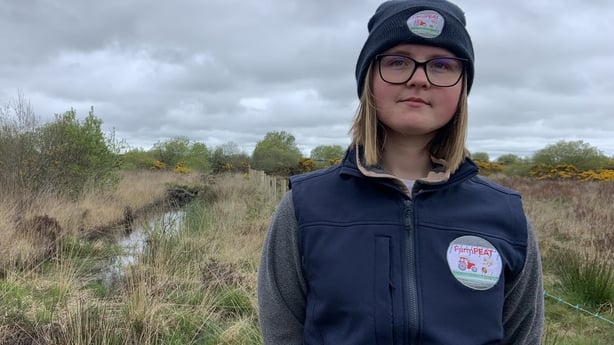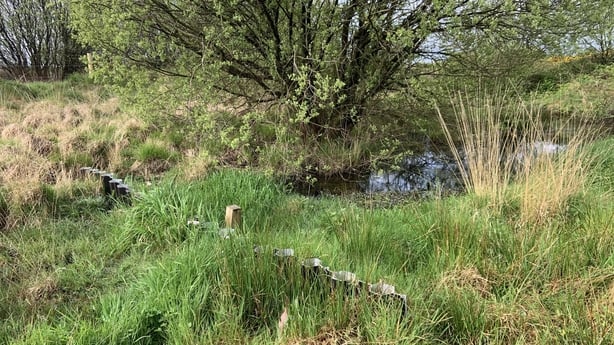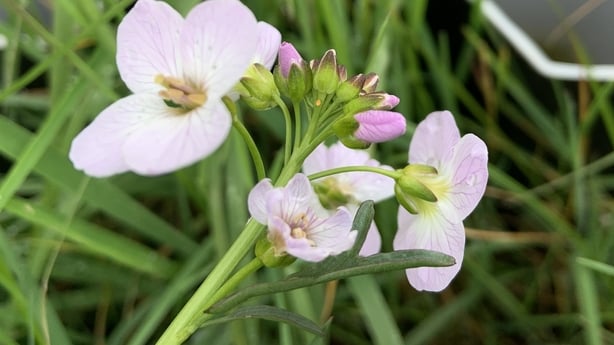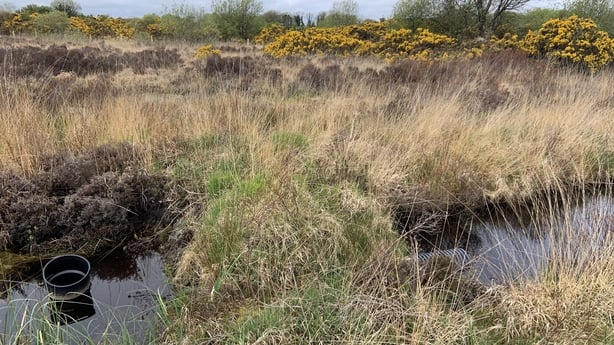A pilot scheme to help farmers manage agricultural peat soils for biodiversity, climate and water quality has been extended until the end of the year.
The FarmPEAT Project (Farm Payments for Ecological and Agricultural Transitions) is an EU funded agri-environmental scheme in the Midlands that rewards farmers for their agricultural peat soils.
The locally led, innovative scheme was launched in June 2021.
Since then, 49 farmers have been taking part across eight bog projects in counties Roscommon, Westmeath, Longford and Kildare.
It is a results-based scheme meaning that payments to participating farmers are linked to habitat and environmental quality.
Farms with higher nature quality receive a higher score and will receive a higher payment than a farm with a lower nature quality.
‘It is win-win all the way’
Martin Dolan lives in Brideswell, Co Roscommon, and has been farming all his life.
He got involved with the scheme after the team visited his land and saw his drains were naturally full of water.
He said he is very happy that people are interested in the wildlife on his land and what he has learned by taking part.
“It has improved with time because they told me how to put certain stock in at certain times of the year, and not overgraze it or under graze it. And I got a payout, so it is win-win all the way,” said Mr Dolan.
On the Clonboley Bog Complex in Co Roscommon, FarmPEAT’s Public Liaison Officer Katie Smirnova outlined the two different streams of payment.

“We offer the results-based payment, which works off the environmental quality of their plots and then we also offer supporting actions payments which allow them to take actions to improve the quality of these plots to then in future years improve their results based payment,” said Ms Smirnova.
The supporting actions include funding for fencing and dams to allow farmers section off transitional areas on their land to improve habitat and environment.
“Here today we’re already seeing things like Lady Smock come up and Meadow Sweet and different types of Sages, all these things are very positive indicators on a wet grassland,” she said.

One of the supporting actions seen at the Clonboley Bog Complex is drain management.
“The farmers have been blocking these drains and installing plastic and peat dams to slow the flow of the water and raise the water table in the surrounding plot to reduce carbon emissions,” she said.
“The peat is made up of dead plants and other organic matter that when exposed to oxygen, when exposed to air speeds up the decomposition process.
“By keeping it wet, we’re slowing down decomposition and keeping that carbon locked in and that’s beneficial to greenhouse gas emissions,” she said.
The natural transitional area around raised bogs is vital for supporting raised bog ecosystems and biodiversity.
The FarmPEAT team believe the benefit of working with farmers in these transitional zones means important ecosystems can be restored.
“It encourages our wetland indicators, our positive species like Lady Smock, and flowers like Ragged Robin to come up back into these plots and provide habitat for pollinators and birds. That’s kind of a win-win for nature and climate,” said Ms Smirnova.

Giving an example of the importance of wetland indicators, Ms Smirnova highlighted why the presence of some of these flowers are vital on the wetlands.
“One of our positive indicators we’ve seen here today is the Lady Smock and that supports the butterfly called the orange tip butterfly, that’s one of its main feed feeding plants.
“If the orange tip butterfly can’t access that Lady Smock flower, then its reproduction instability for its population to survive is really threatened.
“By raising the water table, by managing our grasslands in a lower intensity way, we’re benefiting not only the plants but also the butterflies and all the other wildlife that depends on them,” she said.
Farmers plots are surveyed in the summertime for the different types of plants and their relative abundance, while the conditions of drains and water quality are also examined.
By combining both the ecological and hydrological factors the team can assess the environmental quality and condition of a plot to determine the score a famer will receive, and the payment associated with that score.
The team has been working with a potential participant in the scheme Alfie Barrett who has a farm in Conoulty in south Roscommon.
His farm covers around 20 hectares, containing seven or eight acres of peat land with agricultural and bog land merging.

Mr Barrett is aiming to complete drain blocking in the autumn and acknowledges that change is needed to enhance biodiversity without interfering with agriculture.
“I come from a generation that was reared at a time when production was the key.
“The idea was that where we’d have one cow, we’d keep two. Where we had five sheep, we might keep ten,” he said.
He admitted he was a little sceptical at first when the FarmPeat team approached him about blocking drains and biodiversity, but he said it was always open to him to look at science and what is happening in the world.
“We needed to look at it and see if we need to change and if it might suit you.
“Not every farm might be suitable, but some might, and I think we have a lot of potential here.
“There’s a lot of things that we can do here, which might be useful as we go forward,” said Mr Barrett.

From working with FarmPEAT, Mr Barrett said he has learned about the huge diversity in nature of both flora and in animals.
“We need to protect those and recognise the value of them to us all,” he said.
“We’re going to fence off the drains and measures such as that with a view to maintain the production on the farm, as well as protecting the environment for the future.”
Source link
 TG4 TV PC to TV
TG4 TV PC to TV
